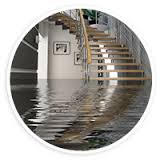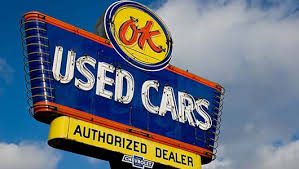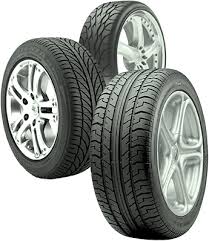Here are few things that you might not realize are covered by standard insurance policies. Take a look.
EMERGE INSURANCE AGENCY904-677-5884
Here are few things that you might not realize are covered by standard insurance policies. Take a look.
EMERGE INSURANCE AGENCY904-677-5884
There are only a few exceptions that a quote will go out from this agency without replacement cost included. Watch and understand why that’s important to you.
EMERGE INSURANCE AGENCY904-677-5884

For most drivers changing a tire is a first time experience, or one that doesn’t occur often.Whether changing a tire for the first time, or as a refresher, here is advice from experts at one of the quality auto insurance companies we represent.
EMERGE INSURANCE AGENCY904-677-5884

Hummus’ popularity is on the rise because Americans are seeking healthier snacks. Americans gobbled up hummus and other so-called refrigerated flavored spreads to the tune of $530 million in 2012, up 11 percent from a year earlier and a 25 percent jump over 2010, according to market-research firm Information Resources Inc. Hummus is very easy to make. Here is one of my favorite ways to prepare it. A major plus to preparing it yourself is controlling the consistency (from to chunky to ultra-smooth)Roasted Garlic HummusMakes 3 cupsThis creamy-zesty dip has more than 40 cloves of garlic in it. Yet, roasting the garlic softens the cloves to a creamy, slightly sweet pulp that doesn’t overwhelm other flavors or give off that typical garlicky aroma.
4–5 heads garlic
1 Tbs. plus ¼ cup olive oil, divided, plus more for drizzling
1 28-oz. can chickpeas, rinsed and drained
½ cup lemon juice
3 Tbs. tahini
1. Preheat oven to 350°F. Cut tops from garlic heads to reveal tips of garlic cloves. Place garlic heads on large sheet of foil, and drizzle with 1 Tbs. olive oil. Wrap garlic heads tightly in foil, and bake 30 to 45 minutes, or until garlic heads feel soft through foil. Cool in foil.2. Purée chickpeas 1 minute in food processor, or until finely chopped. Add lemon juice, ¼ cup olive oil, tahini, and ½ cup water. Blend chickpea mixture 2 to 3 minutes, or until smooth.3. Squeeze roasted garlic pulp from each clove into chickpea mixture in bowl of food processor. Pulse hummus several times to combine. Season with salt and pepper. Spread in thin layer on large plate, and drizzle with olive oil. Serve with whole-wheat pita wedges.Cecil WilliamsEMERGE INSURANCE AGENCY904-677-5884

Water Back-Up and Sump Overflow coverage protects against water intrusion in the event that public utilities and/or septic systems become inundated and reverse course. This type of coverage became very common after the 2004 hurricane season during which storm drains could not handle the amount of rain water inundating them. Do you know how your homeowners insurance would respond?A standard homeowners policy provides coverage for accidental discharge or overflow of water from plumbing, heating, and air conditioning as long as it originates on the premises. For example, if your shower drain clogs and causes water to overflow, you would have coverage for the resulting damage.What if your back up originates off premises? This coverage is separate from flood insurance and most homeowner insurance already covers water damage from roof leaks/burst pipes/certain other causes. Simply put, if your toilets and/or sinks began overflowing into your home due to reasons outside of the home (not a hairball in the P-Trap or tree roots in the main drain) this coverage may apply. If you are not sure if your policy has Water Back-Up and Sump Overflow coverage call your agent. The water back up endorsement removes the exclusion for overflow and discharge from sump pumps. It also expands coverage to include back ups that originate off premises. The endorsement generally includes several limit options ranging from $5,000 up to the full dwelling amount. Be sure to confirm with your agent that your water back up endorsement provides coverage for both building and contents. It’s important to distinguish that the water back up endorsement is NOT flood insurance. A flood, as defined by FEMA, is a general or temporary condition of partial or complete inundation of two or more acres of normally dry land area or two or more properties. In order to obtain flood coverage, you must purchase a flood insurance policy through the National Flood Insurance Program. EMERGE INSURANCE AGENCY904-677-5884

As a vegetarian I love discovering new hearty and filling foods. Fava beans have become one of my favorite, and finding new ways to prepare them is always excitingOne of the most traditional fava bean dishes in the Middle East and Northern Africa is Ful Medames (or Fool Mudamas in Lebanese). Best known as Egypt’s national dish, ful medames is a hearty stew of warmed fava beans stirred with olive oil, lemon juice, and garlic, usually eaten for breakfast. But ful, as it’s known casually, is a staple all over the Middle East and also eaten for lunch. OK, watch this mother and son and learn to prepare Ful Medames. By the way I use canned fava, and make sure you drain and rinse them. Then cover with water and cook the fava beans for 8 -10 minutes until “very” tender.
Ful MedamesSERVES 2–4 INGREDIENTS
2 (15-oz.) cans fava beans, drained and rinsed
¼ cup fresh lemon juice
¼ cup olive oil, plus more to garnish
2 tsp. ground cumin
¼ tsp. cayenne
4 cloves garlic, peeled and mashed
Kosher salt and freshly ground black pepper, to taste
2 hard-boiled eggs, cut into 6 wedges each
2 tbsp. finely chopped parsley
INSTRUCTIONS1. Place beans in a 2-qt. saucepan and cover with water by 1″. Place over medium heat, and bring to a boil; cook until beans are tender, about 8 – 10 minutes.2. Drain beans, and transfer to a bowl; add juice, oil, cumin, cayenne, garlic, and salt and pepper. Stir until beans are lightly broken up. Transfer to a serving platter, and surround with egg wedges; drizzle with more oil, and sprinkle with parsley before serving. Let me know how you like ful!Cecil WilliamsEMERGE INSURANCE AGENCY904-677-5884

Buying a used car from a car owner, used car dealer, or one of brand dealer can be a scary experience.Here is some excellent advice from experts at one of the quality auto insurance companies we represent.
EMERGE INSURANCE AGENCY904-677-5884

Which tires are best for your vehicle?Here are experts from one of the quality auto insurance companies we represent with great advice.
EMERGE INSURANCE AGENCY904-677-5884

Here are 12 practical tips to save more of your hard earned money:
Save your loose change. Putting aside fifty cents a day over the course of a year will allow you to save nearly 40% of a $500 emergency fund.
Keep track of your spending. At least once a month, use credit card, checking, and other records to review what you’ve purchased. Then, ask yourself if it makes sense to reallocate some of this spending to an emergency savings account.
Never purchase expensive items on impulse. Think over each expensive purchase for at least 24 hours. Acting on this principle will mean you have far fewer regrets about impulse purchases, and far more money for emergency savings.
Use debit and credit cards prudently. To minimize interest charges, try to limit credit card purchases to those you can pay off in full at the end of the month. If you use a debit card, don’t rely on an overdraft feature to spend money you don’t have. With either approach, you’ll have more money available for emergency savings.
Are you looking for an effective way to establish a budget? Beginning on the first day of a new month, get a receipt for everything you purchase. Stack and review receipts at the end of the month, and you will clearly be able to see where your money is going.
It pays to practice preventative dental care, since a good cleaning routine helps prevent fillings, root canals, and dental crowns, which are expensive and no fun.
Most people don’t track what they spend and may not realize when expenses add up to more than their budget can handle. To keep track of what you spend, put what you think you should spend for the month on transportation, food, entertainment, etc., into envelopes. This will help you avoid buying things you don’t need, and what’s left over can go into saving.
Take advantage of discounts and/or incentive programs provided through your employer. For example, if the company you work for offers discounted rates for computers, fitness center memberships, movie tickets and passes to summer festivals, take advantage! Check your corporate intranet or talk to your human resources representative. And don’t forget the best deal of all – investing in your 401(k)!
One way to establish a savings discipline is to “save” an amount equal to whatever is spent on nonessential indulgences. Put a matching amount in a cookie jar for expenditures for beer, wine, cigarettes, designer coffee, etc. If you can’t afford to save the matching amount, you can’t afford the $4 super almond low-fat latte.
Take the amount the item costs and divide it into your hourly wage. If it’s a $50 pair of shoes and you make $10 an hour, ask yourself, are those shoes really worth five long hours of work? It helps keep things in perspective.
Aim for short-term savings goals, such as setting aside $20 a week or month rather than long term savings goals, such as $200 over a year. People save more successfully when they keep the short-term goal in sight.
Save money by buying items online, in bulk. Some companies even offer free shipping on large orders. Clearance items are sometimes available, and good savings can be found on non-perishable groceries and diapers. This saves time and money! –
See more at: http://americasaves.org/for-savers/make-a-plan-how-to-save-money/54-ways-to-save-money#insuranceEMERGE INSURANCE AGENCY904-677-5884

Many household items serve multiple purposes saving you money, time and they are all chemical free.
EMERGE INSURANCE AGENCY904-677-5884